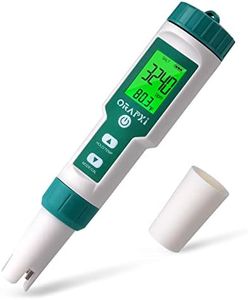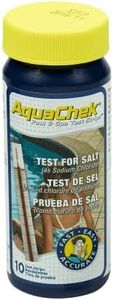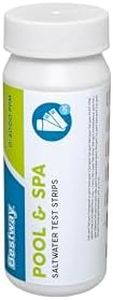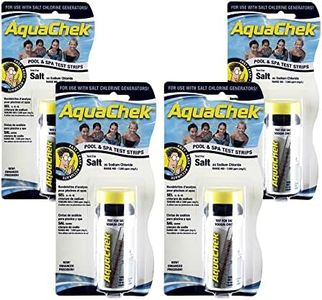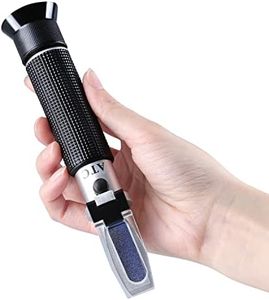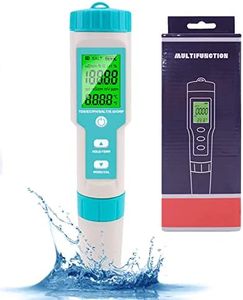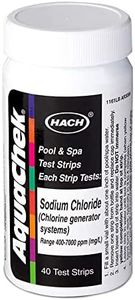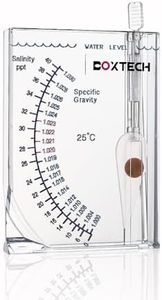We Use CookiesWe use cookies to enhance the security, performance,
functionality and for analytical and promotional activities. By continuing to browse this site you
are agreeing to our privacy policy
10 Best Pool Salt Meters
From leading brands and best sellers available on the web.Buying Guide for the Best Pool Salt Meters
Choosing the right pool salt meter is vital for keeping your pool water healthy and safe for swimming. These devices measure the salt concentration in your pool, helping you maintain the right levels for your saltwater chlorinator to function properly. When picking a pool salt meter, it’s important to focus on factors that affect ease of use, measurement accuracy, and durability in a pool environment. By understanding the main specifications, you can confidently select a meter that meets your pool’s needs and your own preferences.Measurement RangeThe measurement range tells you the minimum and maximum salt concentration levels the meter can read. Because pools typically require salt levels between about 2,500 ppm (parts per million) and 4,000 ppm, it's important to pick a meter that comfortably covers at least this range. If a meter’s range is too narrow, you might not be able to measure when levels are very low or high. If you have unique requirements—like a spa or a non-standard salt system—you may want a wider range. For most pool owners, a meter with a range from about 0 to 7,000 ppm is more than sufficient.
AccuracyAccuracy tells you how close the meter’s reported value is to the actual salt concentration. This is a critical specification because inaccurate readings can result in poor water quality or damage to your chlorinator. Pool salt meters typically specify their accuracy as ±X ppm. For most users, a meter with an accuracy of ±100 ppm or better is suitable; those who want extra precision—such as commercial operators—might prefer even tighter accuracy. Consider your pool size and how closely you need to manage salt levels when weighing accuracy.
Ease of UseEase of use covers how simple the device is to operate and read results. Some meters are digital and give instant readings on a screen, while others might require matching colors or using test strips. Digital meters are generally easier and faster, especially for those who are less experienced. If you want a hassle-free process, choose a simple, clear display and a device that requires minimal setup or calibration steps.
CalibrationCalibration means adjusting the meter to ensure it continues to deliver accurate results over time. Some meters are fully automatic and require little to no calibration, while others may need regular manual calibration using a solution. If you prefer low maintenance, look for a meter that is auto-calibrating or simple to calibrate. More advanced users who are comfortable with calibration may accept a little more complexity for better long-term accuracy.
Durability/Water ResistanceDurability and water resistance are important because these devices are used near water and may be exposed to splashing or even being dropped in the pool. Look for meters designed with water-resistant casings and sturdy builds, which are less likely to get damaged by moisture or impact. Choose based on your usage—if you expect to use the meter frequently or with children around, a rugged and water-resistant design is more suitable.
Battery Life/Power SourceBattery life or power source refers to how long the device operates before needing new batteries or a recharge. Longer battery life means less hassle. Some meters use standard, easy-to-find batteries, while others use specialized or rechargeable batteries. If you want convenience, seek out a model that uses common batteries or holds a charge for many tests.
